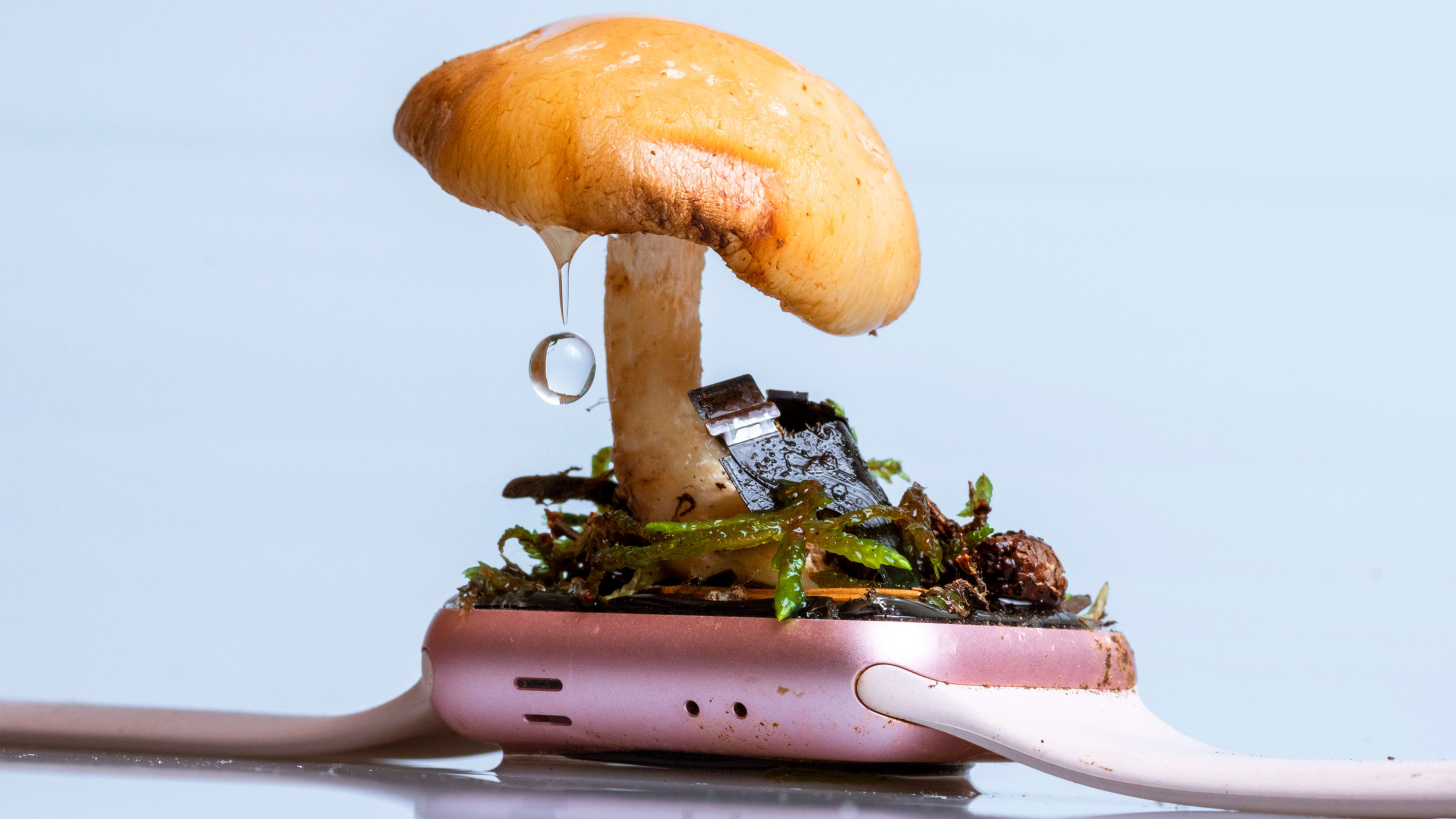We’re kissing our plastic straws goodbye. And many of us have started carrying around a trusty reusable bottle to cut down on our need for disposable plastic bottles. But as we work on reducing our plastic consumption, we often lose sight of some of the most obvious forms of plastic we use everyday: the tech devices that keep us tethered to the modern digital world. In 2018, an estimated 4 million mobile phones were sold every day—a figure which does not include phones that were manufactured but unsold. Once you include phone charges, computers, and tablets, the scale of our technology waste is astronomical. And since most of these products are encased in plastic, they’ll take hundreds of years to decompose.
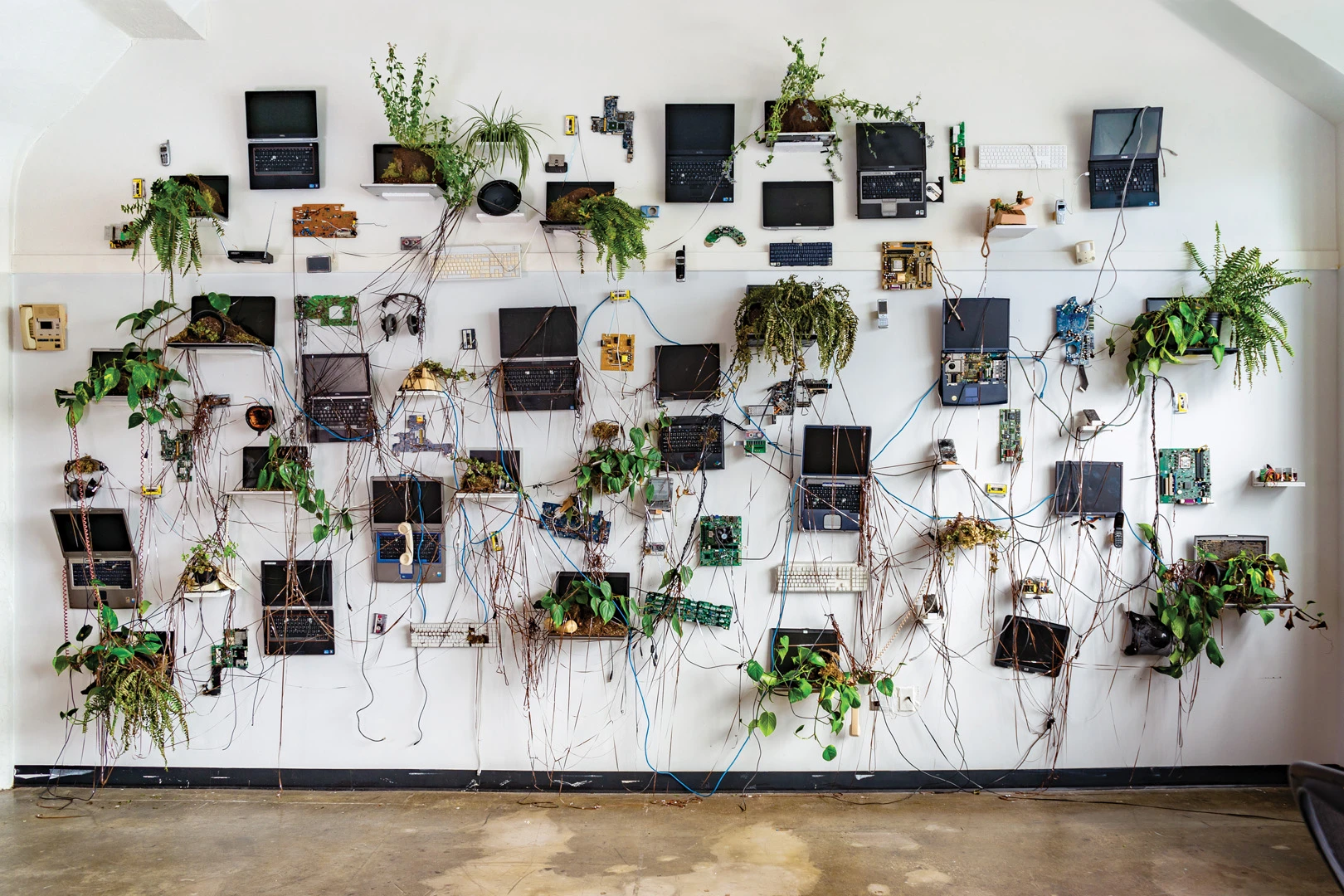
This has been on Nathaniel Stern’s mind for a while now. The Wisconsin-based artist has always been fascinated by technology, ecology, and design, having received a BA from the school of human ecology from Cornell University and a PhD from the department of electronic and electrical engineering from Trinity College Dublin. In his most recent exhibition, entitled The World After Us, Stern creates sculptures, installations, prints, and photographs that weave together plant life with electronic waste to help us imagine how our devices will live on in the world even after we’ve discarded them for the next device-of-the-moment.
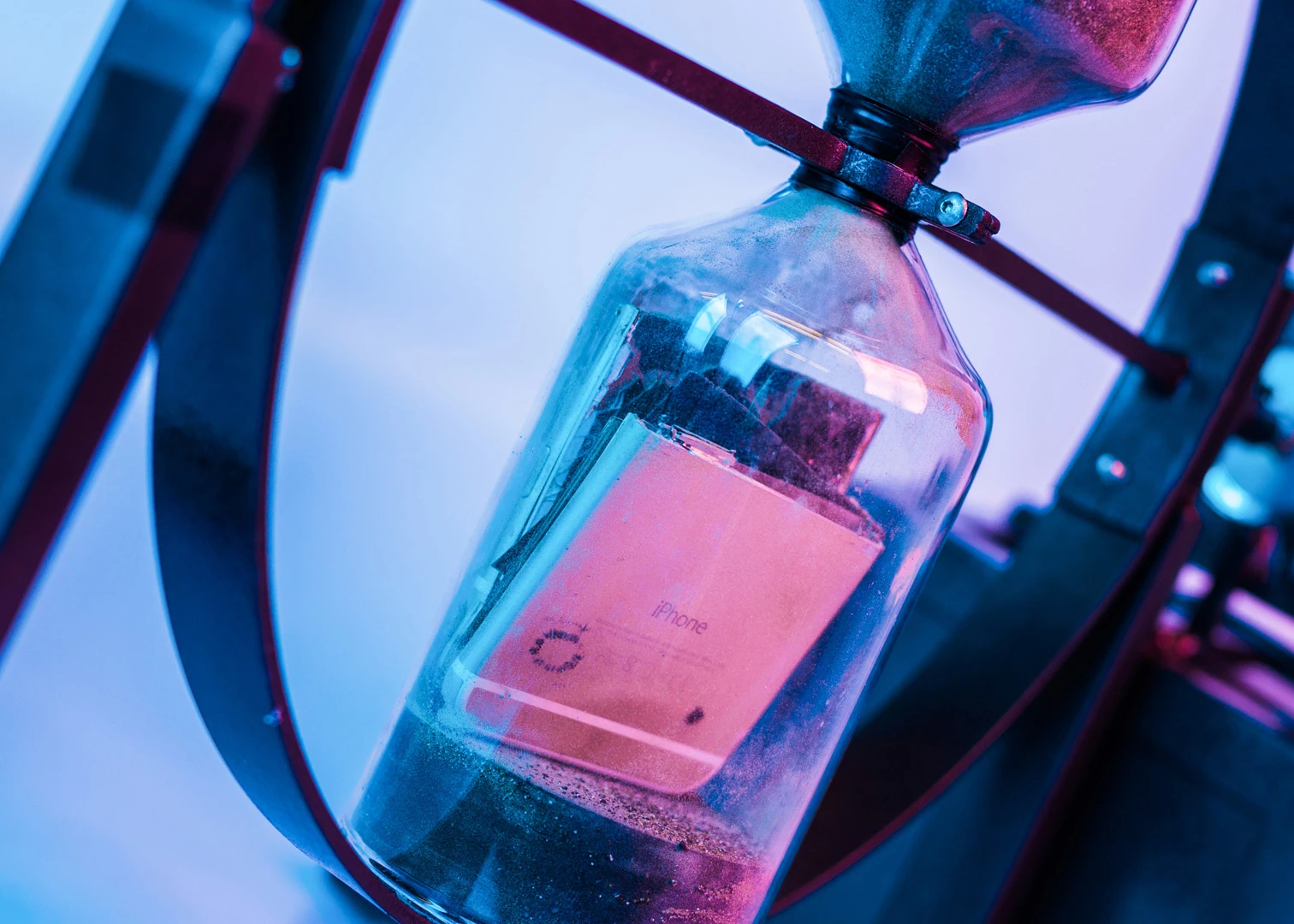
Stern was inspired by a book by journalist Alan Weisman of the same name, which invites readers to imagine how our massive technological infrastructure would crumble and fossilize once humans no longer walk the earth. Stern has given us some visual cues about what would happen to our everyday objects. There are many curious items on display, including a piece cleverly called Photosynthesis that features a small plant growing out of a Panasonic Lumix camera. There’s a large wall covered in plants whose tendrils snake around open laptops, keyboards, cassette tapes, and pieces of a motherboard that have been hung up. There are even pieces of electronic equipment that have long been out of use: An old-fashioned corded phone has leaves growing out of the dial pad.
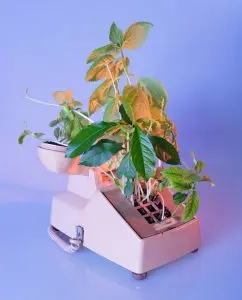
Countries have developed recycling systems to deal with everyday plastic waste, like plastic bottles and food containers. Consumers don’t recycle these items as stringently as they should, but these waste management systems at least exist. It’s much harder for us to recycle electronic waste since we can’t just chuck them in a bin. Part of the reason they are harder to recycle is that they are made up of many different materials—including aluminum and steel—which are hard to separate and recycle appropriately. And these products also contain toxic or hazardous materials, like lead and mercury, which can harm both humans and the environment.
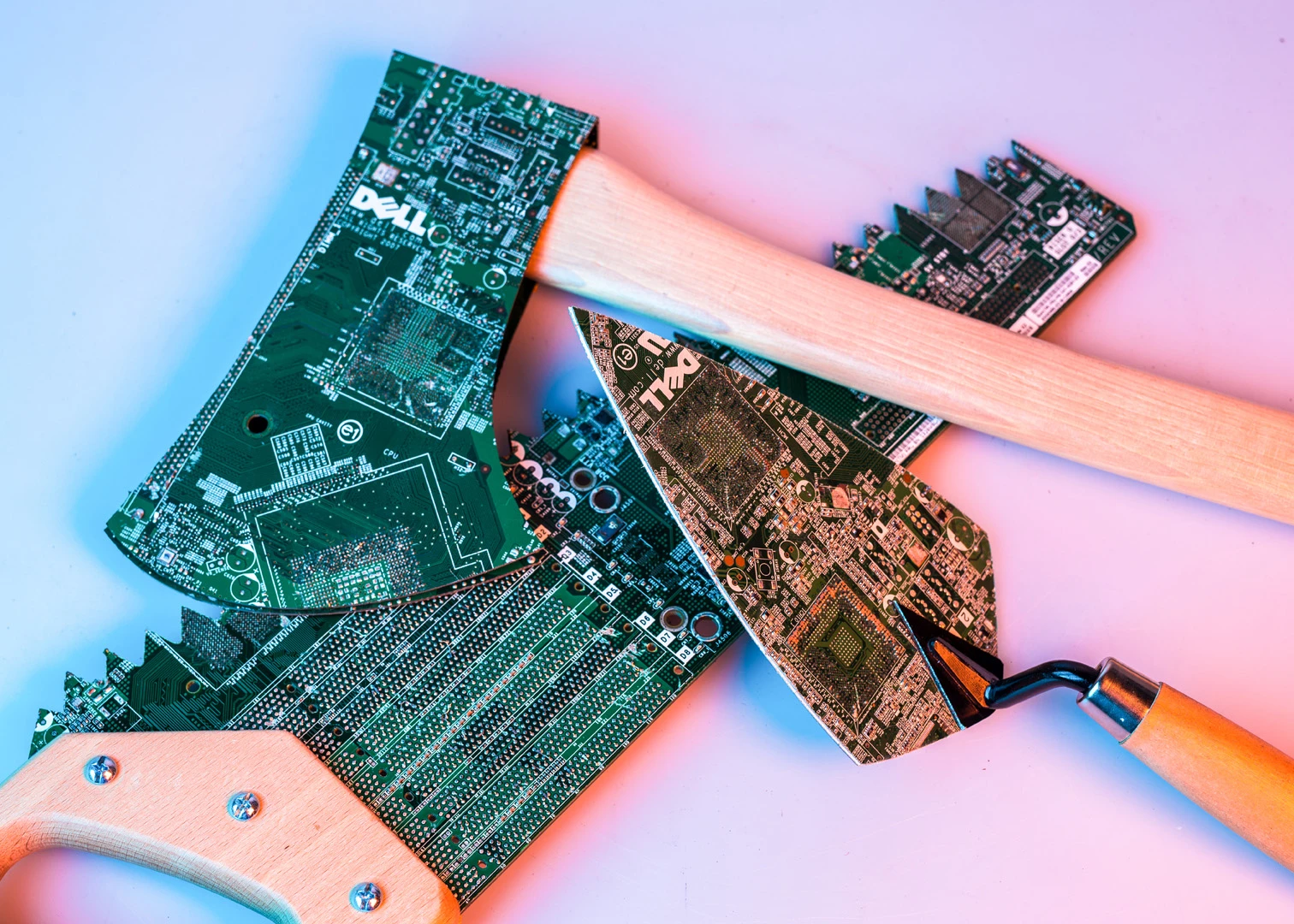
Until e-waste recycling becomes more widespread, you have several options when it comes to disposing of your technology devices. There are many charities or nonprofits, including eBay for Charity and AmericanCellPhoneDrive.org, that take gadgets, refurbish them, and give them to people who need them. Tech companies including Apple and Amazon have buyback programs for newer electronic products, but will also accept and recycle older products. And finally, you can explore your town or city’s recycling program. Some have special collection days for electronics and will responsibly recycle the items they collect.
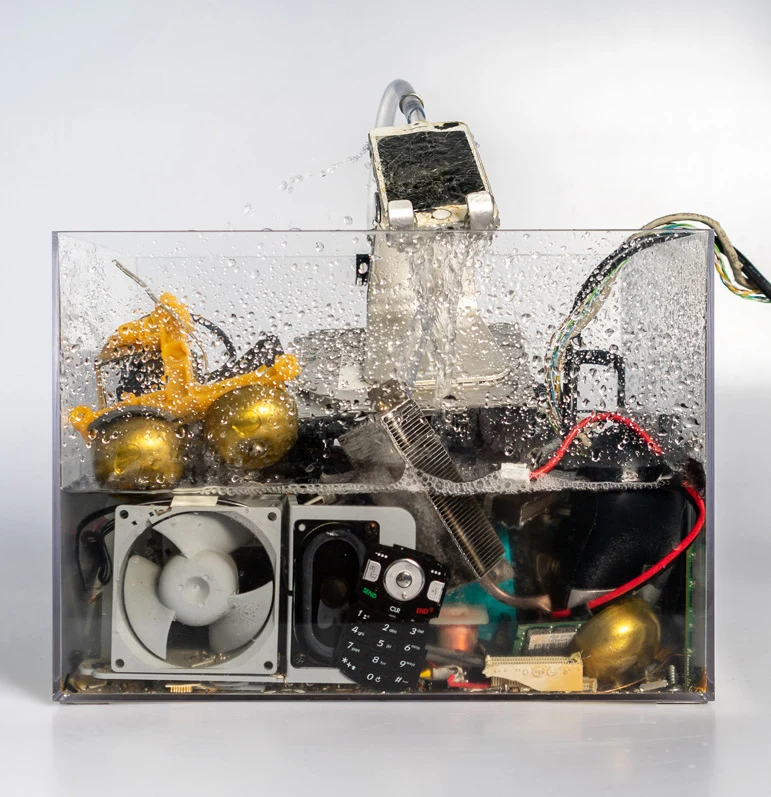
Stern’s exhibit reminds us that if we want to take our plastic consumption seriously, we need to be more comprehensive in our approach. Cutting down on straws and bottles is certainly a step in the right direction, but let’s not forget to recycle that keyboard or stereo system once its reached the end of its life.
The World After Us: Imaging techno-aesthetic futures premieres at the Museum of Wisconsin Art, Downtown, January 17 – March 25.
Recognize your brand’s excellence by applying to this year’s Brands That Matter Awards before the early-rate deadline, May 3.
